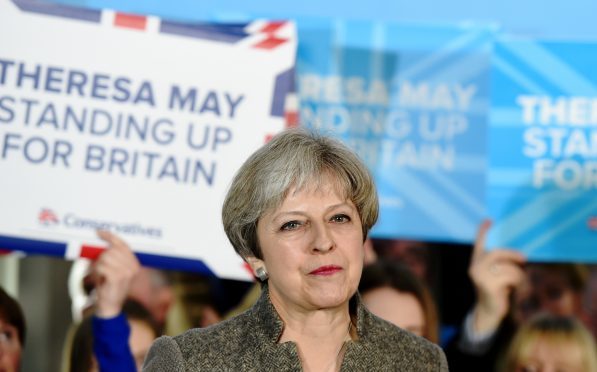Theresa May faced calls to resign yesterday amid the political fallout from the London Bridge terror attack which dominated election campaigning.
The prime minister defended her record as home secretary, but repeatedly refused to say whether cuts to police numbers in England and Wales under her watch should be reversed.
Statistics show they have fallen by around 20,000 since 2010.
Jeremy Corbyn was among those who suggested Mrs May should step down, although he conceded Thursday’s vote was “probably the best opportunity to deal with it”.
His comments came after Steve Hilton, a former adviser to David Cameron in Number 10, claimed the Tory leader was “responsible for security failures” and should be “resigning not seeking re-election”.
Meanwhile, First Minister Nicola Sturgeon insisted she had some “tough questions” to answer, adding that the contrast between Scotland and the UK “couldn’t be starker”.
But Scottish Liberal Democrat Leader Willie Rennie argued police in Scotland needed a multimillion-pound funding boost to make the force “fit for the future”.
On the campaign trail in London, Mrs May accused Mr Corbyn of failing to meet “even the minimum requirement of the job of prime minister”.
She added: “In this election, there is one leader who has made it his life’s ambition to get rid of Trident, and one who is committed to keeping it; one leader who has boasted about opposing every single counter-terror law, and one who has been responsible for passing them; one leader who has opposed the use of shoot to kill, and given cover to the IRA when they bombed and shot our citizens.
“That’s not leadership. It’s an abdication of leadership.”
On the issue of police cuts, she claimed the counter-terrorism policing budget had been protected and the government had funded an uplift in the number of armed officers as well as giving polic
Responding, the Labour leader denied he had ever opposed police having a shoot-to-kill policy when dealing with terror attacks.
And asked if he backed calls for Mrs May to resign, he replied: “Indeed I would.
“We do have a problem – we should never have cut the police numbers.”
The prime minister later laughed off the suggestion she should stand down at a rally in Edinburgh.
Ms Sturgeon said Scotland was not complacent or immune from terrorist threats, but she added: “Unlike other parts of the UK we have also maintained police numbers and increased armed policing.
“The contrast between Scotland and the UK couldn’t be starker… In Scotland we’ve maintained 1,000 more than the number we inherited in 2007, we’ve taken steps to increase the number who are trained to carry firearms.”
Mr Rennie argued, however, that the “once proud police service” had been “battered and bruised” as a result of the decision to create one centralised force among other things.
In February, Police Scotland outlined plans to cut officer numbers by 400 as part of its 10-year plan, with recruitment levels beginning to slow between 2018-20 and resources re-directed to frontline operations.
Police Scotland Deputy Chief Constable Iain Livingstone said the 2026 strategy was about balancing the workforce to have “the right people with the right skills, working in the right place”.
He added: “We will free up officers from back office jobs into operational roles, increase policing productivity and recruit more specialist police staff to work in operational areas.
“We will only slow recruitment when we are satisfied that we have increased our operational capability.
“Over the last 18 months, we have significantly increased the number of firearms officers we’re able to deploy to keep Scotland safe. Our 2026 strategy will not impact on those figures.”
A Scottish Police Authority spokesman said the draft policing 2026 strategy reflected a world of “increasingly complex risks and threats”.
He added: “At the heart of the strategy is the need to maximise the effectiveness of Police Scotland’s operational response through a combination of investment in new skills and capabilities, and improvements in productivity and efficiency to increase the number of operational hours delivered at the frontline.
“The strategy also sets out what is required to bring the cost of the service back into financial balance, based on assumptions of the funding that may be available.”
